|
On April 27, 2007, law enforcement authorities converged on a property at 1915 Moonlight Road in Surry County, Virginia, to execute two drug search warrants. What they found on this rural property quickly became the subject of intense national discussion and drew a great deal of attention to pit bull type dogs. Because of the involvement of then NFL football player Michael Vick in a multi-state dog fighting operation, the dogs soon came to be know as “the Vick dogs.” The dogs became the subject of a civil legal proceeding regarding their disposition as property. The following wording is taken from the Verified Complaint regarding the dogs which was filed in the United States District Court for the Eastern District of Virginia, Richmond Division (federal court) on July 2, 2007: On or about April 25, 2007, state investigators executed two search warrants at 1915 Moonlight Road, Smithfield, Virginia. During those searches, the officers recovered and observed numerous items associated with an illegal animal fighting venture, including approximately 54 pit bulldogs. Many of the pit bulldogs recovered or observed in the search had scars and injuries consistent with injuries sustained in dog fighting.Additional items were recovered and observed. These items include: a blood-stained fighting area; animal training and breeding equipment, including a "rape stand," a "break" or "parting" stick, treadmills and "slat mills;" assorted paperwork documenting involvement in animal fighting ventures; and performance enhancing pharmaceuticals commonly used to increase fighting potential in dogs trained for fighting, as well as to keep injured dogs fighting longer. On August 31, 2007, the Court entered a judgment forfeiting the seized dogs to the United States. Although some large national organizations were calling for the dogs to be destroyed (namely PETA and HSUS), they were not. On October 16, 2007, the Court granted a motion by the government to appoint Professor Rebecca J. Huss as the guardian/special master to evaluate the permanent disposition options for the forfeited pitbulls. The recommendations were adopted by the court and the dogs went to a variety of organizations: 22 dogs went to the Best Friends Animal Society Sanctuary in Utah, 10 went to Bad Rap in California, 3 went to the SPCA of Monterey County in California, 1 went to Our Pack in Virginia, 4 went to the Richmond Virginia Animal League, 3 went to Recycled Love in Maryland, 3 went to the Georgia SPCA, 1 went to Animal Farm Foundation in New York and 1 went to Animal Rescue of Tidewater. (Of the 52 dogs taken from the Vick property, 2 died while in government custody and 2 others were euthanized due to physical/emotional suffering) It seems since the time of the initial seizure of the dogs and we learned about Vick's personal participation in the dog fighting operation and killing dogs he has been in the news regularly. I will not recount the history here. He was last in the news in late August when it was announced that he had been named as sports analyst for Fox Sports. Prior to that, he was in the news in July when he was inducted into the Virginia Tech Sports Hall of Fame. I often read statements by people to the effect that Vick “did his time” and “paid his debt to society.” I beg to differ. We all know that Vick spent some time in prison. What many people either don't realize, or refuse to acknowledge, is that he did time in federal prison for federal crimes related to engaging in a criminal enterprise which crossed state lines. The Surry County District Attorney at the time of the dogs were seized and the scope of the dog fighting operation was discovered was Gerald Poindexter. He chose to not prosecute Vick for the state law crimes which included his personal participation in torturing and killing dogs. If you have never read Jim Gorant's book which sets forth what really happened at 1915 Moonlight Road and what happened after the dogs were seized, I cannot encourage you strongly enough to do so. "The Lost Dogs: Michael Vick's Dogs and Their Tale of Rescue and Redemption" is an incredibly well researched book which holds a place of honor in my own animal welfare library. For me, Vick's “debt to society” will never be paid because he was never fully prosecuted for his crimes. I realize that he has a right to earn a living and feed his family. I do not believe that he should enjoy any type of celebrity status in our society or that he should be put forth as a role model of any kind. When I think about the ten years since the dogs were saved, I choose to focus on the dogs and not on the thugs who used dogs for their own entertainment and financial purposes, leading to abuse, neglect and death. Although there were calls for their destruction, the 48 dogs who went on the organizations approved by the court proved to be far more resilient and far more forgiving than anyone would have imagined. They are examples that even when pit bull terrier type dogs have been subjected to the worst that humans have to offer, they are capable of defying the media hype of them as super-predators and of overcoming incredible abuse. Many of the dogs saved on April 27, 2007, have since passed away. To learn the history of all of the dogs, please consider reading Jim Gorant's recently published book, “The Found Dogs: The Fates and Fortunes of Michael Vick's Pit Bulls, 10 Years After Their Historic Rescue.” I don't want to spoil the book for you. I will say that of the 48 dogs placed, "17 passed their CGC (Canine Good Citizen test), seven were certified as therapy dogs and more than half have made public appearances to support anti-breed legislation or to raise awareness and fight discrimination. At least that many have also been used in training programs and foster homes to act as role models and help calm other dogs." We've learned a lot about pit bull type dogs in the last ten years. It has obviously not been enough as municipalities continue to enact and enforce BSL (Breed Specific Legisaltion) and BDL (Breed Discriminatory Discrimination), objectifying perfectly good family dogs who have done nothing wrong while perpetuating myths about the dogs which are not based in science. The pit bull ban is still in effect in Denver, Colorado. It is also still in effect in Miami-Dade County, Florida, although a federal lawsuit challenging the legality of the ban was filed on October 11, 2017. I'll be watching that case closely and genuinely hope the ban is repealed. To learn more about fact-based research related to pit bull type dogs and dog aggression, I encourage you to visit the website for the National Canine Research Council. I relied heavily on materials published by the organization in my original 2009 edition of my research paper advocating adoption of pit bull type dogs and the revision of my paper published in 2014. If you'd like to read an incredible law review article on the topic of pit bull type dogs and Breed Specific Legislation, Katie Barnett of the Barnett Law Office is published here. Katie and I first interacted during the time when the criminal and civil cases about the former Vick dogs were pending. I consider Katie another one of my go-to subject matter experts; her law review article is incredibly comprehensive and goes far, far beyond the scope of my research paper. In honor of National Pit Bull Awareness Month, let's all take a moment to reflect on the dogs saved more than 10 years ago, on those dogs still being unfairly judged due to media hype and on the people who love them dearly - who know the truth about the capacity of these dogs to love and be loved. (image of Molly courtesy of the Best Friends Animal Society; image of Hector courtesy of Roo and Clara Yori)
0 Comments
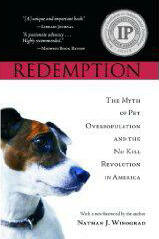 Some recent events regarding my animal shelter reform advocacy have led me back to the book which was a game changer for me. Redemption: The Myth of Pet Overpopulation and the No Kill Revolution in America by Nathan Winograd. The book was first published in 2007 (and has since been made into a documentary film). It changed my life when I read it in 2008 and learned about not only the history of the animal welfare movement (which began with Henry Bergh) but also about this wonderful thing called the No Kill equation. My copy looks like a used textbook with worn covers and highlighting. Nathan did not “invent” the No Kill programs and concepts so many of us live by today. What he did do was to analyze them and then present them in equation form for the very first time. He essentially created what I consider a blueprint for No Kill success in any place in the country. And therein lies the genius of the equation; we do not need Nathan Winograd to come to each of our communities and rescue us from ourselves. We need only learn about the No Kill equation, evaluate our existing resources and challenges, connect with those how have used the equation before us (in order to learn from their successes and mistakes) and then mold and shape the equation to fit the needs of the community. I believe in the equation because I know it works. I know people who are using it at this very minute and are saving the lives of countless animals in the process. In spite of the success of the programs and services of the equation, opposition still abounds. I should no longer be surprised by the toxicity of the opposition, but I am. As Nathan has said before, this is not just some clash of egos. People who either promote or oppose No Kill concepts and programs can’t just get in a room together and talk and hug it out and all just get along. While those who promote No Kill as an ideal and as a cultural norm champion saving lives, those who oppose No Kill as an ideal (or even say it is not possible, ala “the world is flat”) champion the status quo and do so at an incredibly high cost. Which leads me back to my point about Redemption. The afterword in the book talks about four groups of people who will oppose the concepts presented in the book. The observations about those groups are as relevant today as they were when Nathan wrote about them so many years ago and I’d like to share them with you, with Nathan’s permission, of course. Do you recognize any of this behavior? - The first group will agree with the message, be sympathetic to the cause, and want the same goal. Nonetheless, they will claim it ignores the success of others and focuses too much attention on San Francisco and later Tompkins County, communities in which [Nathan] played a significant role in drastically increasing the live release rate for shelter animals. (Making this observation more current, the first group will say that Austin, Texas, had to spend a lot of money [when in fact it became No Kill with no initial cost output)] that Huntsville, Alabama is "different" because of the progressive and diverse nature of the community, that there is no one on Earth quite like Doug Rae in Fremont County, Colorado and that compassionate leaders like him are hard to come by or that there must be something magical in the water in Lake County, Florida for it to become a No Kill community virtually overnight. - The second group that will take issue with the book are the animal activists who are intent on doing what they have always done, regardless of the facts. They will continue to blame the public and fight for more and tougher laws-once again buying into the false paradigm of pet overpopulation and public irresponsibility. They will argue that their community is different and that citizens in their community are particularly irresponsible. The evidence clearly shows that none of this is true. What is true is that shelters are filled with animals, in no small part because of a small segment of the public's throwaway attitudes about their pets. But that is why shelters exist in the first place. They are supposed to be the safety net for animals the same way orphanages and child protective services are the safety net for parentless and abused children. While people surrender animals to shelters it is the shelters that kill them, and one does not necessarily follow or excuse the other. -The third group of critics of the book will be the shelter directors themselves - those who are involved in the killing of [millions] of dogs and cats a year and who erroneously claim that doing so is both necessary and proper. They will see this book as nothing more than a personal attack. They will argue that we should all get along, not fight each other, and focus on our common enemy-the irresponsible public which fills shelters with discarded animals. This point of view is nothing more than a smokescreen and is contradicted by the facts.
-The fourth and final group of people who will criticize the book are a group I collectively call “the naysayers.” The naysayers are those who have a predetermined agenda of support for animal control, regardless of how many animals the local shelter kills or how otherwise dysfunctional the agency is. They cannot be swayed by logic, facts or alternative points of view. They seek out that which fits their beliefs and reject everything else to the point of taking facts out of context - and in some cases, making up “facts” - to fit the story. It is incredibly unfortunate that so many people expend so much time and energy fighting against programs which have been proven to save lives when fully implemented. Some of the most vocal and toxic opposition to animal shelter reform comes from people who claim to advocate for animals - which seems completely illogical. Because it is. I never cease to be amazed that people view free speech seeking better for shelter animals as "bashing" or an "attack." It is neither when it is done respectfully, diplomatically and it is focused on accountability and leadership (as opposed to being focused on specific people). As I have written before, a time will come when we no longer destroy savable pets in America. When that fine day comes, will you look back and know that you championed life? Or will you look back and regret all those hours and days and weeks and months you spent defending the killing because you were more focused on people than on animals? Or worse yet, because you would not speak your personal truth to save innocents when that is what the situation demanded of you. You’ve decided to bring another dog or cat into your home. You know where and how you’ve found animals before so you tend to gravitate to what has worked for you in the past. If you haven’t cared for a pet before, you may take advice from friends or family members on how best to proceed. There are plenty of options out there. You can buy from breeder, you can search through newspaper ads or you can go to a local pet store. Or you can take a long, hard look at why you really want to bring an animal into your home and into your life and find that adoption from a shelter or a rescue group is your best option. It has been said that “adoption could in theory replace all population control killing right now – if the animals and potential adopters were better introduced.” When the time comes for you to bring a "new to you" animal into your life, I hope you will seriously consider making adoption your best option. If you were planning to purchase a purebred animal, think realistically about whether you plan to enter the animal in professional dog or cat shows or if you are more focused on the companionship of the animal. If the animal will be a pet and will not compete in breed competitions, you can find a wide variety of animals at your local shelter or with a rescue group. Shelters and rescues help both mixed breed animals and purebred animals. You can use web sites like Petfinder.com or AdoptaPet.com to search for homeless animals by location, breed, gender, size, age and temperament to find a homeless animal who is perfect fit for you and your family. Which is exactly what my family did recently. Our dog Aspy passed away on July 4th of 2016 under what we consider traumatic circumstances. His passing was nothing like we had hoped and while it sounds theatrical, we both had problems with flashbacks for a very long time. I knew we would wait quite a while before we brought another dog into our home and we did. The search began in earnest a few weeks ago as we talked about the size of dog we were looking for, basic temperament, how much time we are willing to devote to training and rehabilitation. Our tool of choice? Petfinder. As I have written before, I have a love/hate relationship with Petfinder. I love it because it’s a wonderful way for animals in need to find new homes. I’ve described the site as being like an online dating site, but to connect humans with companion animals instead of humans with humans. I hate it because there are so many animals in need that going on the site can be both depressing and sensory overload. And I find it somewhat addictive also. Once I start looking on Petfinder, I almost feel like I can’t stop. Looking at so many faces compels me to look at even more in the search for that next creature who will spend the rest of his or her life in my home. I ended up spending hours at a time staring at my phone, looking through listings and then handing my phone to Rich to say, “here. Look at this one.” He sent me links for dogs he was interested in and we went back and forth over a period of time before we agreed on a small group of local dogs we wanted to meet. The first dog we met was being held at a local animal hospital which holds the contract for a local city. “Boudreax” was cute, but he was a puppy and was practically uncontrollable when we took him outside on a leash. I know that’s not his fault. I fully realize that most dogs do not behave in a shelter environment in any way remotely like they behave away from that environment and in a home. Boudreax went on our “to consider” list. Because of where he was being housed, we felt he was less at risk of being destroyed. The second dog we met was being housed at a dog sanctuary/shelter in another city. Our visit there was so shocking that I have still not quite processed it. I have never been to a place like that and as we walked around, I found myself thinking that I could easily be shooting B roll video footage for the HSUS or the ASPCA. There were hundreds of dogs on the property, three to each outdoor kennel. There was waste everywhere and flies everywhere. “Lindsay” was nothing like the dog we saw in the Petfinder listing. I know it was the same dog, but three years at what I consider a dog prison had clearly taken a toll. She was so withdrawn that we really could not engage with her in any meaningful way. Even the volunteers (who seemed oblivious to the conditions in which they were working) were not really able to get a positive response from the dog. I cried when we left. I have put the wheels in motion to try to have some positive changes made at the outdoor shelter, but have no idea if they will do any good or not. That is another blog for another day. The third and fourth dogs we met were being held at a county animal shelter a couple hours away from where we live. Rich was interested in a dog listed as “Shaggy” and I was also interested in another dog named “King.” King had been surrendered because his owner had cancer and could no longer care for him. He was house trained, neutered, could walk on a leash and had clearly been someone’s pet. I knew Shaggy would be “the one” from the moment I saw his face. His Petfinder listing said that he had been found running loose with a chain around his neck and the chain was so tight it had to be cut off. We were told he was 2 years old and the shelter staff thought he was a German Shepard mix. He did not do well on a leash and when we tried to walk him around the “meet and greet” yard, I ended up with poop all over my shoes and my pants. But that didn’t matter at all. We talked for a few minutes to make sure we were ready. I was torn, much like I was while looking at all the images on Petfinder. Part of me wanted to adopt Linsdey just to get her out of the terrible place where she had lived for three years. But we also did not want our adoption to be motivated by guilt and we wanted to make decisions for the right reasons. Shaggy went home with us that same day.  Shaggy became Rusty. He has been in our home for just over two weeks and is doing really well. He’s been crate trained and we’re working on house training. He’s much younger than we were told and still has a lot of puppy in him which makes him somewhat of a wild child. He has some of the behaviors of a formerly chained dog. He is easily distracted by sounds – other dogs barking, children at play, birds. The leash training is a work in progress. He will go in circles if he’s on a lead that’s too long and we have to keep him focused (chained dogs often go in circles out of boredom and as they explore the diameter of the small areas to which they are confined). Rusty now has “sit” down pat and is doing better with “down” (which we use to get him to lay down to have his feet wiped before coming inside). He loves, loves, loves to run and play. Thankfully, Rich has years of experience in training dogs who come from bad circumstances. It helps that we had a fenced exercise area put in our yard at the same time we were doing perimeter fencing recently. We can take Rusty off leash to let him run and chase a ball. We actually think someone may have tried to do agility training with him before. He will fetch a ball and when he brings it back, he jumps in the air like he expects to be caught. Rusty is goofy and sweet and silly and full of energy. We have no idea what breed he is. Some have said he has some type of snow dog in him based on his face and his tail curls up like a Samoyed. In the end, his breed doesn't matter to us at all. He was the perfect dog for us. It will take time for him to decompress and to learn how to behave as we teach him our language and he learns ours. But he will live a great life in our home and is now a family member. I talk a lot about animal shelter reform and about No Kill philosophies on my site for a reason. Rusty is but one of millions of dogs in our country who have done nothing wrong and who just need a new start. I shudder to think what would had happened to him had we not just happened upon his Petfinder listing one day. Would he still be alive? We’ll never know. The director of the shelter from which we adopted him freely told us that she does destroy animals for space. Which is simply a tragedy as far as I’m concerned. With very few exceptions, every animal entering our animal shelters either was or could be someone’s beloved pet. We owe it to all of them to treat them as the individuals they are and to not judge them solely by the circumstances which led them to be in the shelter. Or even by how they behave once they are in the shelter. King went to a rescue group run by a contact of mine last week. Boudreaux was adopted two days ago. I’m working to get a rescue contact to pull Linsday and put her in a foster home so she can be socialized to people again and can overcome whatever trauma she has experienced in the last three years. October is Adopt a Shelter Dog Month. When the time comes to bring a new companion animal into your home, please adopt. Please. There are so many animals in need and there is surely one “out there” who will perfect for you. In November of last year, I wrote a blog called "Rescuers at Dog Auctions - Please, Stop." The blog received a lot of attention and not all of it was good. I knew that some in the animal rescue community would not take kindly to my position. I honestly expected a great deal of hostility from some rescuers and I was not at all surprised by their negative reaction. My hope was to reach ordinary, animal loving people who may not be aware of the topic and who may unwittingly be complicit in the behavior through well-intended donations. The concept is fairly simple. There are organizations and individuals which breed dogs and which then sell them at auctions, much like a livestock auction or an auction of farm equipment. Dog auctions are held in a variety of places. The most well known dog auctions are held by Southwest Auction Service in Wheaton, Missouri. The next dog auction is being held this Saturday - October 7th. Looking at the schedule, four more dog auctions will be held before the end of the year after the one being held on Saturday. There was a time when the people at dog auctions were other breeders and were brokers who were there to buy dogs to be sold in pet stores across the country. Make no mistake - this has always been big business and it is fueled by one thing: our willingness to buy dogs in pet stores. Millions of dogs are bred each year to meet public demand and millions of dollars change hands in the process. I have never been to an dog auction, but I have numerous sources and contacts who have and their first-hand accounts are good enough for me to not only have an opinion about the auction process in general terms, but to have an opinion on how that process has changed - for the worse - due to people in the animal rescue community. My sources have decades of combined experience in interacting with commercial breeders and with the auction houses themselves. They have been around long enough to see the evolution of the industry based on sweeping changes brought about by good intentions, but which have made matters worse. Many of them have been involved for decades in seeking legislation to regulate the dog breeding industry, to make auctions illegal and to ensure better conditions for the "breeder stock" and the puppies they produce. As I wrote in my earlier blog, there was a time as recently as 10 years ago when the presence of rescuers and rescue groups at dog auctions was not the norm in most regions. Most of those present at auction were breeders who were at the auction to buy dogs to add to their businesses. During this time, it was not uncommon for some in rescue get dogs for free, to get "dollar dogs" or to get large numbers of dogs for small amounts of money (i.e., 50 dogs for $3. Yes you read that correctly). That all changed not quite 10 years ago in the Great Lakes region and about 6 years ago in the Midwest. Rescuers had an increasing presence at auction and were often easy to spot from the way they dressed, the way they behaved and the amount of money they were willing to spend on dogs. The presence of rescuers at auction is now extremely obvious to both the auction companies and to the breeders who are both fascinated by and repelled by the rescuers’ behavior in terms of how much money they are willing to spend to "rescue" dogs. I have heard the arguments of many in the rescue community to the effect that buying dogs at auction is a noble cause and that it is all about the dogs. I recently read an article written by a rescuer who equated the dogs she and her peers buy at auction as machines. She said the breeding dogs are the machines and the puppies are the products. She wrote that when she and others like her buy dogs at auction, they are taking a machine out of the production process and that dog will no longer be objectified or mistreated in the course of producing puppies. This argument is not only incredibly short-sighted. It is simply wrong. Yes, there are some dogs "in the system" at "puppy mills" or in large commercial dog breeding operations who are not treated well. Some are outright abused. Yes, it is noble to seek to get those dogs out of the system to end their lives of imprisonment and servitude and to rehabilitate them to put them into loving, compassionate homes. But when money is paid by rescue groups for those dogs in amounts which far exceed what any other bidder would pay, three things happen: - a dog has been removed from the breeding operation and will more likely than not go on to lead a wonderful life in a new home(if the dog has been neglected, has serious health issues and is not socialized to people, the rehabilitation process can take a long time and many well-meaning adopters may not understand the challenges they will face) - more money has been paid for that dog than would have been paid by non-rescue bidders at the auction (in some cases these amounts are many times what another breeder would have paid for a dog) - the dog which is no longer part of the breeding operation will be replaced by a better, younger or more healthy dog The first of those three things is great. I would love nothing more than for all dogs currently being used as part of a breeding operation to be freed, rehabilitated and to go on to live lives of luxury and be spoiled rotten. That is not a realistic idea at this juncture simply because the business is so huge and because it is fueled by us and our demand for dogs. It is the second and third things which are the issue. The money paid for the dog at the auction simply serves to enrich the breeding operation and the dog bought by the rescuer will be replaced with at least another dog if not more than one dog. It cannot be denied that the presence of rescuers at auction has changed the industry. Breeders send dogs to auction because they are done breeding them (they are no longer profitable), because they can't sell them directly to consumers and/or because they know they can get more money at auction than anywhere else. As I wrote about last year, there are now breeders who produce puppies of certain breeds specifically to sell to rescuers at auction. The solution to me is simple even if some people get emotional about it. The dogs who are in the commercial breeding industry now are already there. Some are well cared for. Many are not. If we want to end what many call "puppy mills" or better regulate the commercial dog breeding industry, the way to do that is through endorsing legislation which sets standards for the care of the dogs and to stop buying the products in pet stores. And in auction tents. I understand we feel badly for those dogs in the system, particularly those who have not been treated well. We see them as victims and we should. But when rescuers buy them at auction and call it rescue, we are simply ensuring the industry will be more profitable than ever and we are ensuring that dogs we do not see will take their place. It is a fallacy to think that by purchasing a dog at an auction, no other dog will be negatively impacted. Animal rescue is very much about helping animals in need, many of whom are in our antiquated sheltering system and who are at risk of death every day in all but the most progressive communities. If you are a rescuer, or you financially support a rescue group, please focus on those dogs in need in the animal shelter in your own community or in another community. If yours is a breed specific rescue and the demand of your followers for the breed of choice is so great it cannot be met through saving shelter dogs or other dogs of that breed needing to be re-homed for some reason, consider expanding your rescue organization to also help other dogs of a similar size or look. You may be surprised to learn that many people think they want a particular breed, but are willing to adopt another breed of dog in order to save the dog's life. Please, rescuers, just stay away from auctions. Please. And donors, please do not financially support those who buy dogs at auction. You may think you are doing something noble and just. But you are not. If you are intent on having a dog which came from a puppy mill for some reason, connect with an organization which does not buy dogs at auction and which instead gets dogs relinquished to the organization for free by breeders and auction houses with no money changing hands. (Note - at the time I was writing this blog, I learned that the City of Dothan, Alabama, was planning to auction off a number of dogs which had been seized from a local dog breeding operation. The dogs had been spayed/neutered and vetted and I am told that this was done as a fundraising effort toward building a new shelter. I opposed the auction decision; a lottery would have been another way to raise money from the community while raising awareness about all shelter dogs. A number of people in the rescue community who regularly buy dogs at auction in Missouri spoke out against the Dothan auction, but they attended anyway. I had hoped they were attending for research purposes. They bought dogs as intermediaries for other rescue organizations, in some cases outbidding locals who had hoped to adopt the dogs.) (images courtesy of PetShopPuppies and National Mill Dog Rescue)
|
AuthorI am an animal welfare advocate. My goal is to help people understand some basic issues related to companion animals in America. Awareness leads to education leads to action leads to change. Archives
July 2024
Categories
All
image courtesy of Terrah Johnson
|
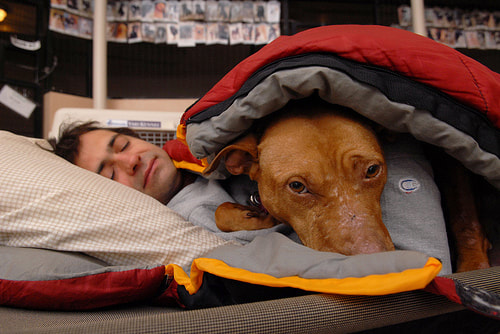
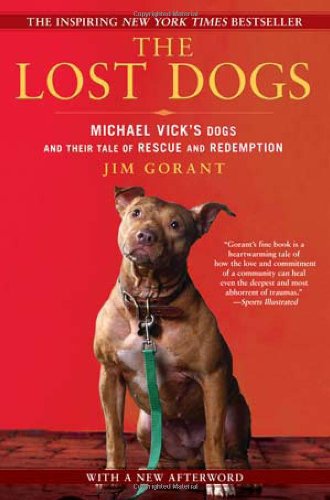
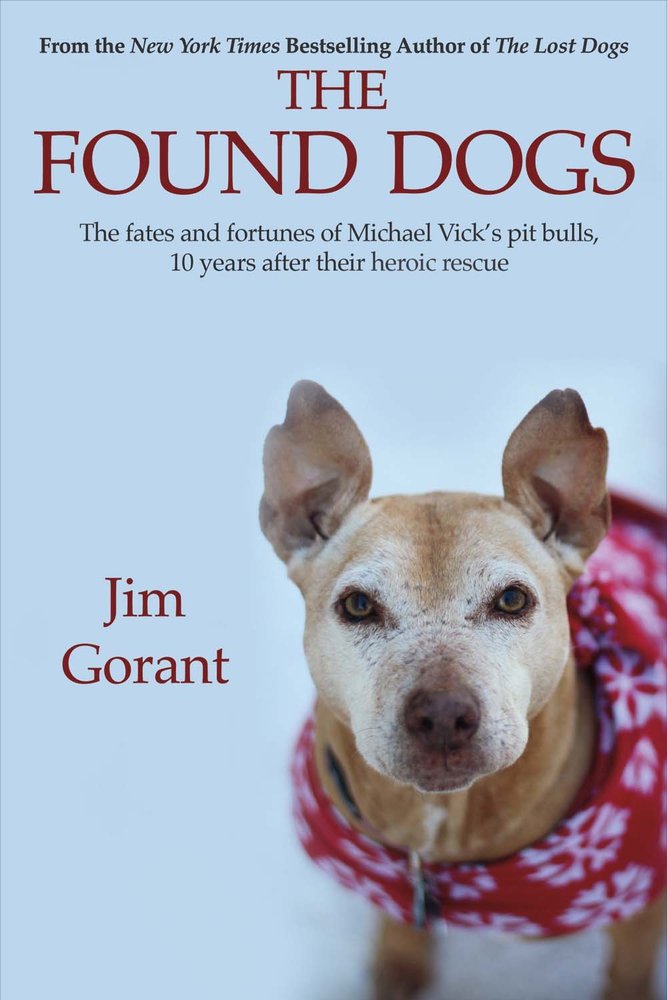
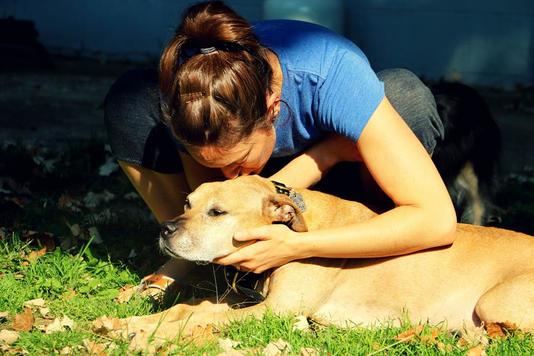
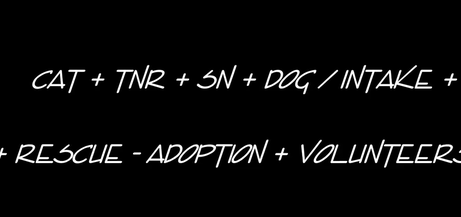

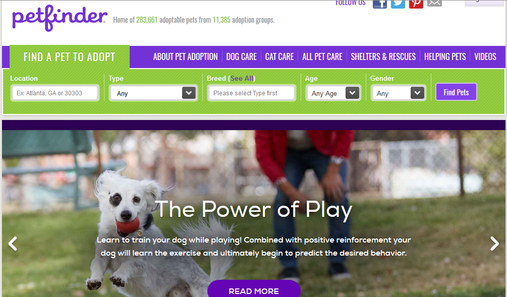
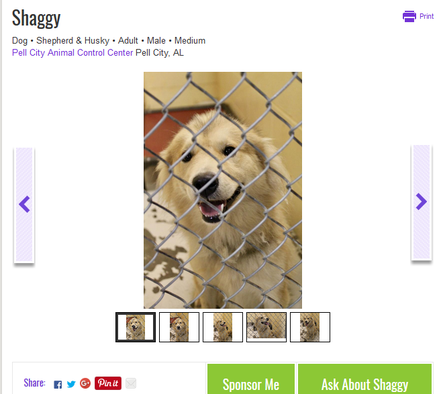
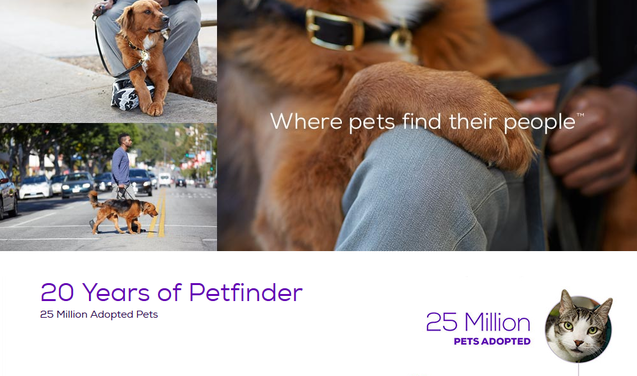
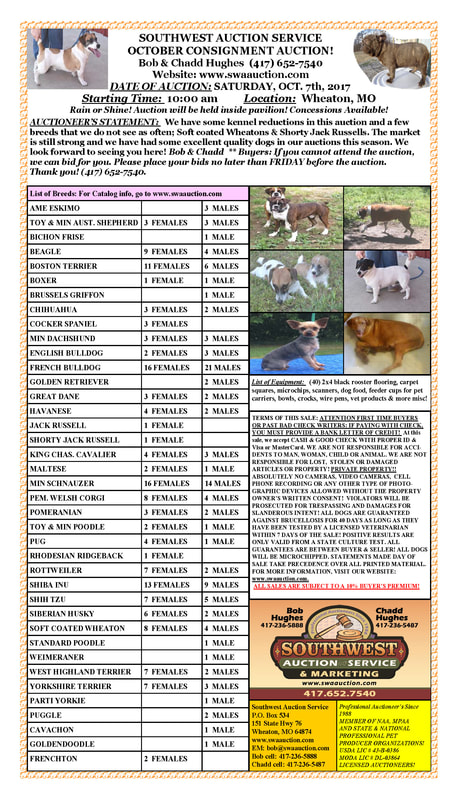
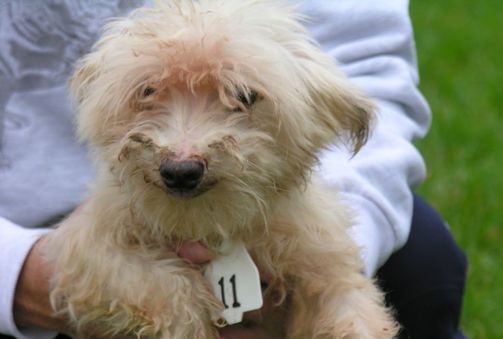
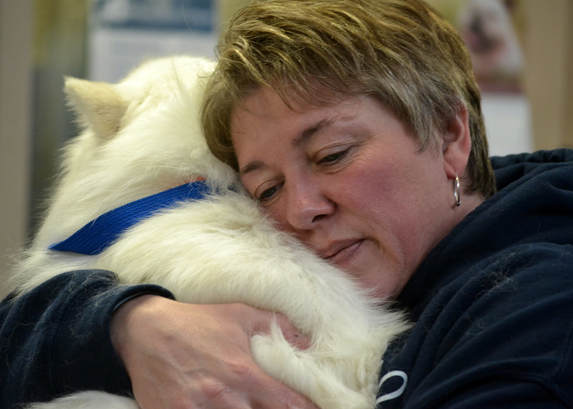
 RSS Feed
RSS Feed